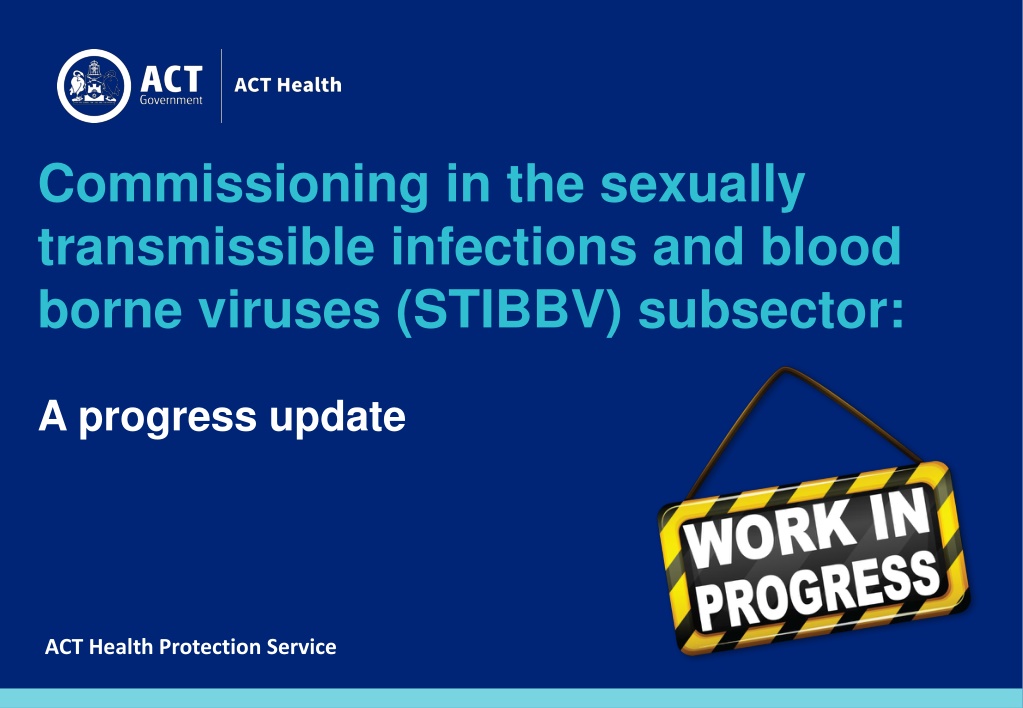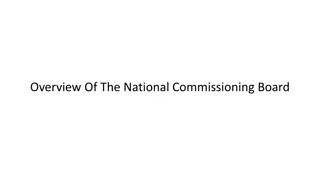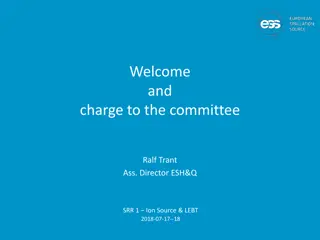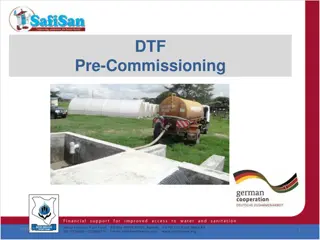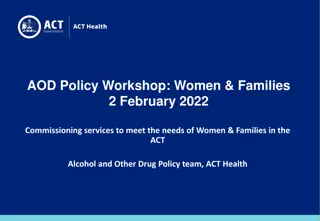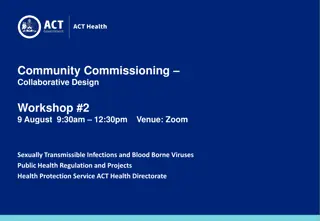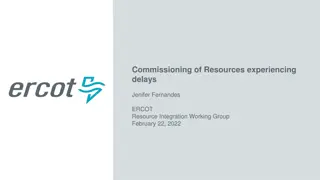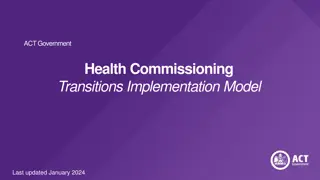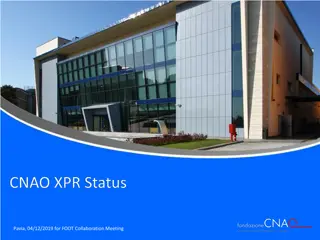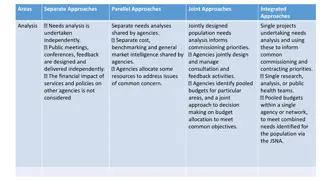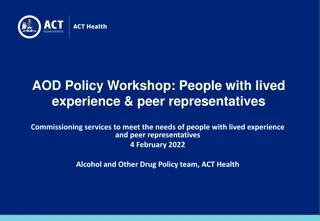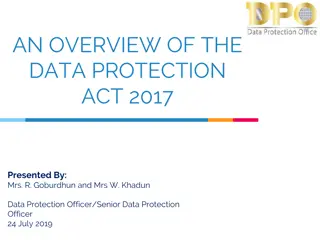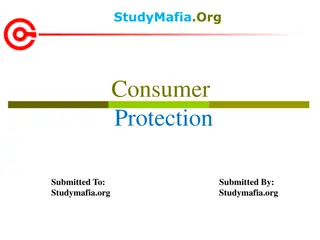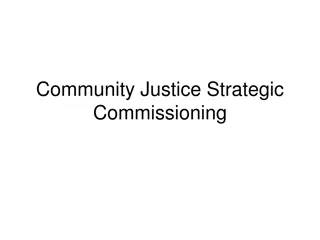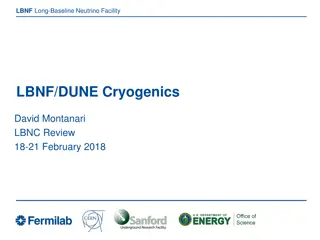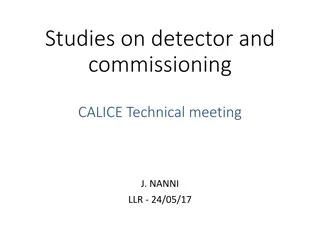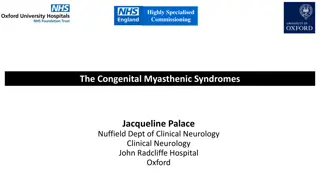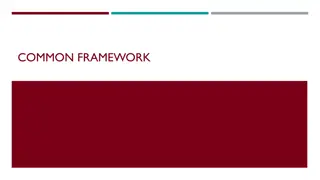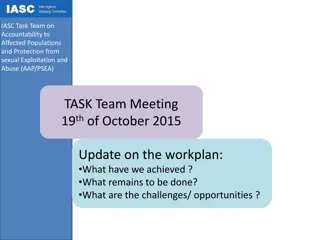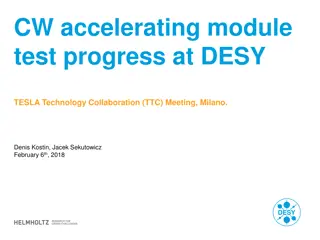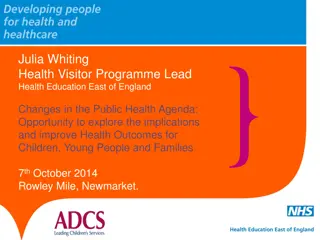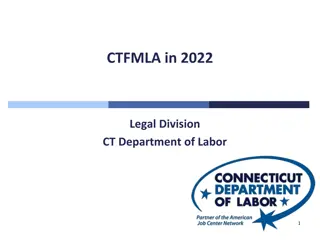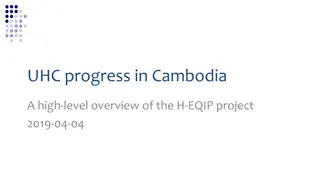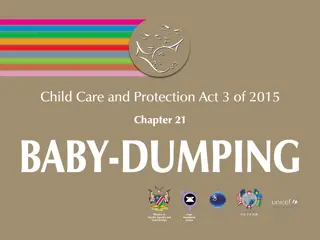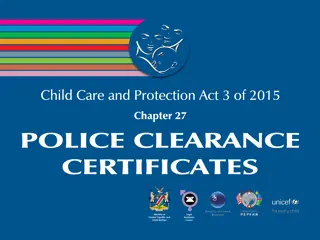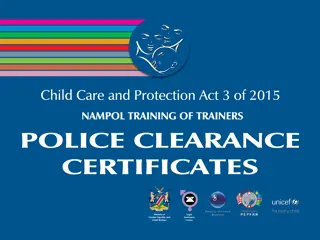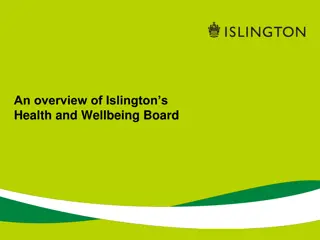Progress Update on Commissioning in STIBBV Subsector by ACT Health Protection Service
ACT Health Protection Service provides a progress update on commissioning in the sexually transmissible infections and blood borne viruses (STIBBV) subsector. The goal is to design a service system that is appropriate, equitable, accessible, and affordable for all individuals in the ACT community, focusing on priority populations. Stakeholders include ACT Government, community partners, and service providers working to address barriers in STIBBV care. Strategic alignment with global policies and sustainable development goals is crucial in this effort.
Download Presentation

Please find below an Image/Link to download the presentation.
The content on the website is provided AS IS for your information and personal use only. It may not be sold, licensed, or shared on other websites without obtaining consent from the author. Download presentation by click this link. If you encounter any issues during the download, it is possible that the publisher has removed the file from their server.
E N D
Presentation Transcript
Commissioning in the sexually transmissible infections and blood borne viruses (STIBBV) subsector: A progress update ACT Health Protection Service
Commissioning intent The goal of commissioning in the sexually transmissible infections and blood borne viruses (STIBBV) subsector is for ACTHD, in partnership with community partners to collaboratively design a STIBBV service system which meets the evolving needs of the ACT community. ACTHD envisions a service system which is appropriate, equitable, accessible, and affordable for all individuals, with a particular focus on priority populations as identified in the Hepatitis B, Hepatitis C, HIV and Sexually Transmissible Infections: ACT Statement of Priorities.
ACTHD position: Commissioning in the STIBBV subsector STIBBV service providers in the ACT have demonstrated their willingness and capacity to adapt and respond to emerging needs and growing demand, particularly in light of the COVID-19 pandemic, and more recently, monkeypox. Nonetheless, we recognise that burden of disease is constantly shifting and there is scope for exploration of how services can innovate and integrate to best meet current, emerging and future demand. We are also aware that some individuals continue to experience barriers to STIBBV care in the ACT. We endeavour to seek clarity around service access constraints so that they can be addressed through commissioning. 3
Strategic alignment Sustainable Development Goals Global policy WHO Global Sector Strategies on HIV, viral hepatitis and Sexually Transmissible Infections 2022-2030 5 National Strategies National Policy National clinical guidelines Hepatitis B, Hepatitis C, HIV and Sexually Transmissible Infections ACT Statement of Priorities ACT policy ACT Health Services Plan, Sexual Health Services Plan, ACT Preventive Health Plan, Wellbeing Framework, Triple Bottom Line Assessment & ACT Procurement Framework 4
Aligning key work in the STIBBV subsector The Kirby Institute ACT Surveillance Report Sexual Health Services Planning Statement of Priorities Commissioning 5 Sustainable Development Goals
Stakeholders Consumers The STIBBV Health Advisory Committee ACT Government Stakeholders Currently funded community partners Meridian Incorporated other non-Government stakeholders STIBBV business unit in HPS (ACTHD) The Junction Youth Health Service (Anglicare) Sexual Health and Family Planning ACT Hepatitis ACT Communicable Disease Control (ACTHD) Winnunga Nimmityjah Aboriginal Health Service Canberra Sexual Health Centre (CHS) Canberra Alliance for Harm Minimisation and Advocacy (CAHMA) Capital Health Network-HIV Program Australasian Society for HIV, Viral Hepatitis and Sexual Health Medicine (ASHM) The Liver Clinic/Emergency and gynaecology departments at the Canberra Hospital (CHS) The Women s Health Service (CHS) Directions Health Sex Worker Outreach Program (SWOP) Health System Strategies and Program Support (Health planning) (ACTHD) Justice Health ACT Walk-in Centers The Commissioning Team (ACTHD) The School Youth Health Nurse Program (CHS) The Child at Risk Health Unit (CHS) Forensic and Medical Sexual Assault Care (CHS) Other commissioning subsectors/business units The Scarlett Alliance The Youth Coalition of the ACT Health Care Consumers Association (HCCA) A Gender Agenda The Kirby Institute (UNSW) Gugan-Gulwan Youth Aboriginal Corporation Companion House Multicultural Hub Canberra Chief Minister, Treasury and Economic Development The Forcibly Displaced Person s Network 6 Australian National University and University of Canberra Medical and Counselling Services Local General Practice services
The STIBBV subsector STIBBV stakeholders comprise a collective of government and non-government organisations who provide a multitude of local responses to address the burden of STIBBV in the ACT. Key initiatives include: clinical services (including screening, diagnosis, treatment, care, and monitoring); prevention and harm reduction initiatives (including provision of condoms, pre-exposure prophylaxis (PrEP), post-exposure prophylaxis (PEP) and needle syringe programs); health promotion and education programs; support and advocacy (including counselling services) community development and engagement activities; workforce training and development; clinical and practice support services; and disease surveillance, data management and research. 7
Timelines and progress Design Strategise Procure Deliver August-December 2022 August 2021-July 2022 January-December 2023 January 2024 onwards Finalise programs/services for procurement Clarify procurement processes in line with legislation and guidelines Draft approach to market documents Undertake tender process Communicate to providers Draft new agreements Implement new agreements Continuous evaluation Discuss findings from phase 1 Solidify health needs Prioritise health needs Explore evidence based care considerations to address identified needs Explore outcomes and metrics to determine success Articulate commissioning intentions Identify key stakeholders Identify data sources Identify current and emerging health needs Literature review Amalgamate findings Consult and provide feedback Consumer engagement 8
Commissioning - A new approach to delivering and procuring services 9
Snapshot of phase 1 activities Broad stakeholder webinars Benchmarking with other jurisdictions Data from academic institutions Strategise Consumer engagement activities Literature review Service mapping 10
Snapshot of phase 2 activities Sharing and discussion of data Preliminary exploration of outcomes and metrics Solidifying health needs Design Discussion of care and service considerations Prioritisation of health needs 11
Successes and celebrations Stakeholders have demonstrated commitment and willingness to engage with commissioning as a change management process for sector sustainability. Strong relationships between the business unit and a broad range of stakeholders strengthens connectivity and visibility within the sector. Regular and ongoing opportunities for stakeholder engagement has facilitated the exchange and sharing of valuable information and expertise to inform commissioning. Amplifying the voices of consumers and services users has been critical to inform commissioning in the STIBBV subsector. The Planning and Funding Framework and Health Needs Analysis brings together a comprehensive range of information to inform commissioning and other STIBBV related policy activities. 12
Challenges 13
Lessons learnt Explore capacity for additional resourcing early on within business units. If you are considering procuring consultants to support your commissioning processes, clarify process, expectations and intended outcomes early to avoid miscommunication. Allow enough time to procure consultants in line with ACTHD policy and allow sufficient time for consultants to complete their work effectively. Business units need to factor these elements into overall commissioning timelines. 1. Subsectors need to factor in additional time for commissioning activities noting there may be amendments to business unit work demands and timelines throughout the process. Flexibility with activities may be required in response to stakeholder feedback or to address specific commissioning or research questions which arise during the process. 2. Ensure phase one (strategise) has completely wrapped up before commencing phase two (collaborative design) and ideally with a break of a few weeks in between. This break allows the sector and business unit to reset for maximum engagement and productivity. This should also be applied in the transition from phase two (collaborative design) into phase three (procurement). 3. 14
Lessons learnt- continued Communicate regularly with stakeholders to maintain buy-in and engagement and so that issues and concerns can be addressed early. Communicate stakeholder participation expectations clearly from the outset so that activities are focused and productive. 4. Don t be afraid to change the flow/content/timing of commissioning activities following stakeholder feedback (subject to your overall timelines). This demonstrates that you are listening and learning through the process. 5. Hybrid engagement activities (a mix of online and in-person participation) are not optimally productive as online participants are often not engaged equitably. Consider facilitation either completely face-to-face or completely online, noting online may be preferable and practical to maxamise wider stakeholder attendance. 6. Develop a plan for managing probity and mitigating probity risks early. Communicate probity constraints and boundaries with stakeholders clearly. 7. 15
